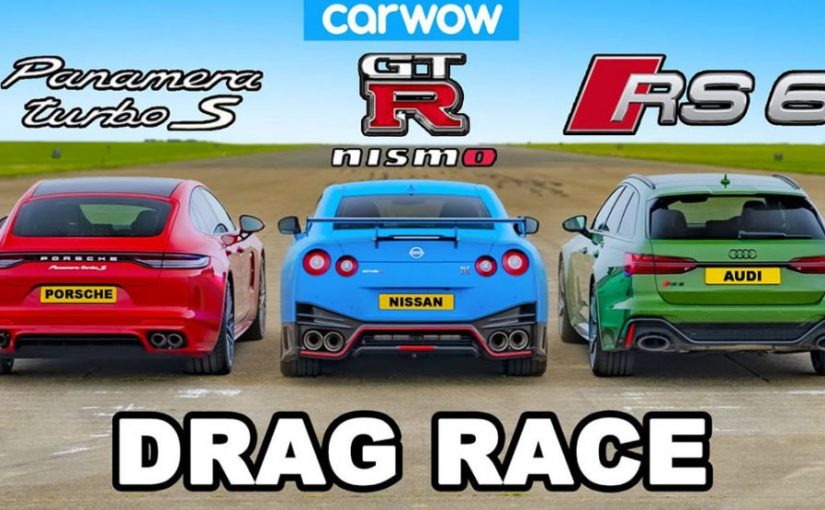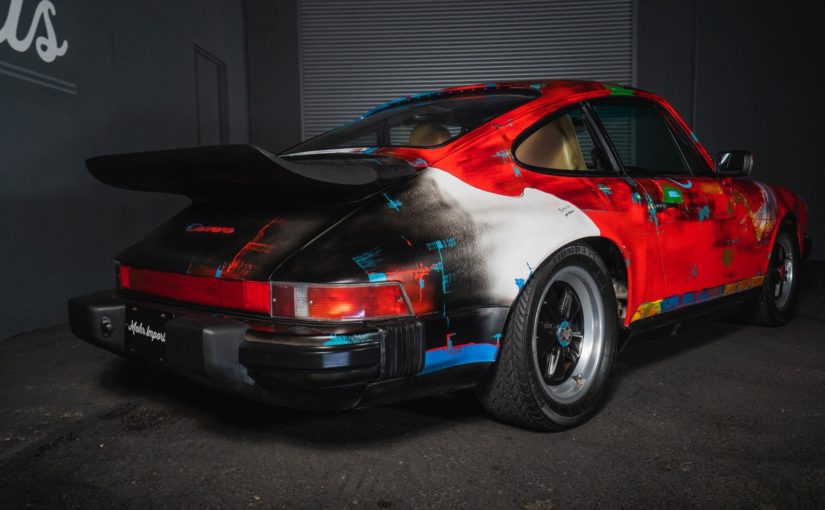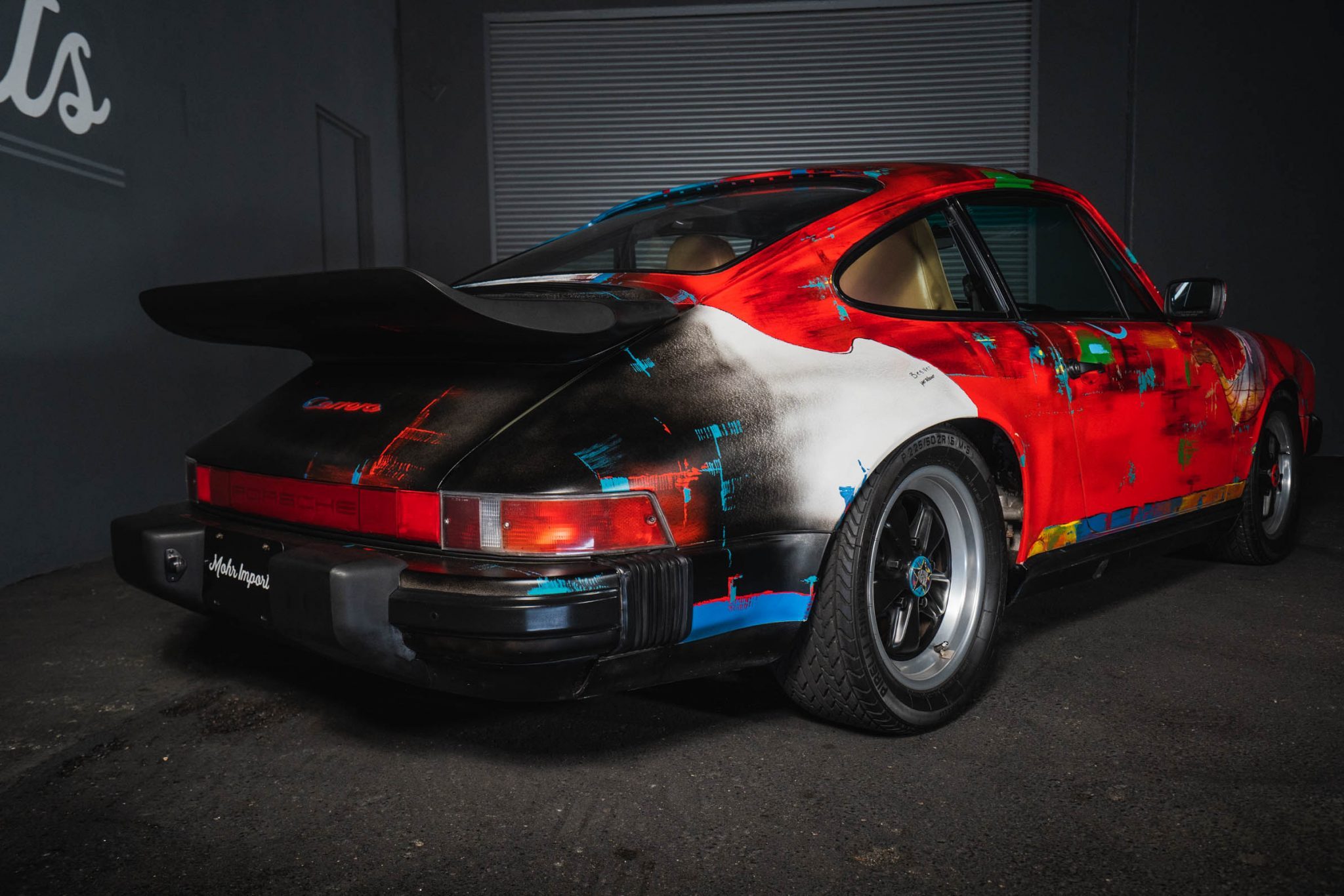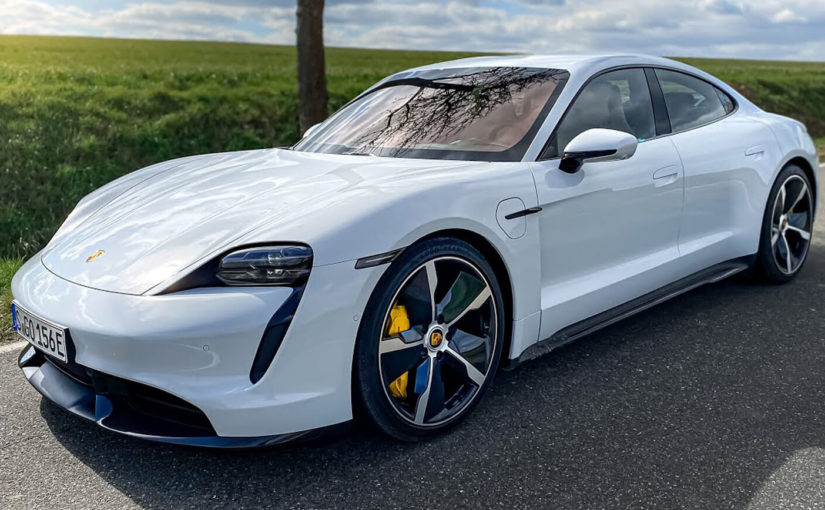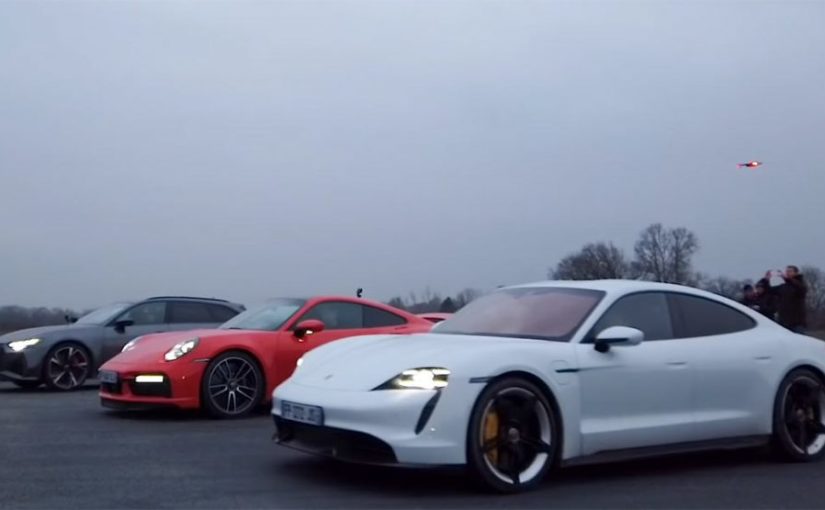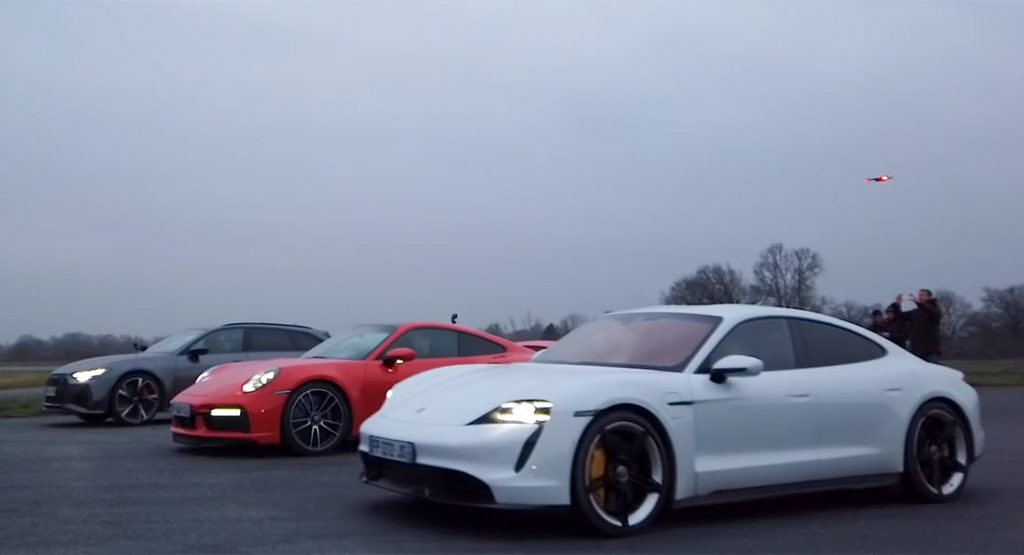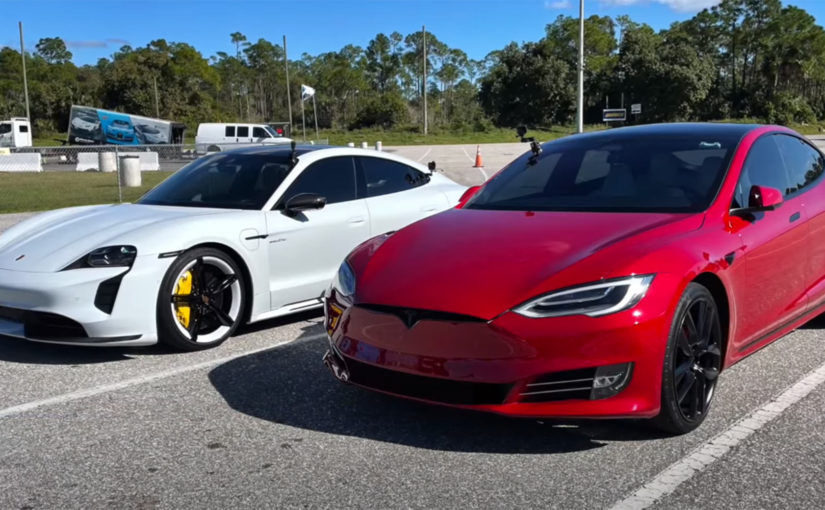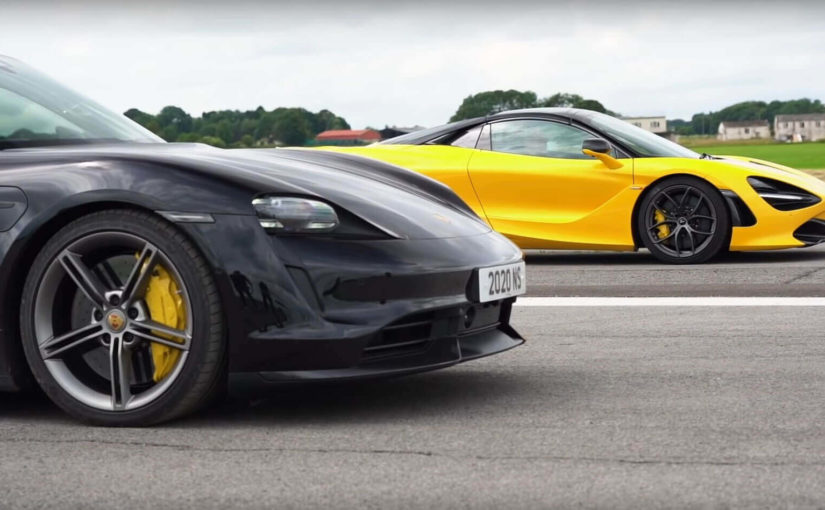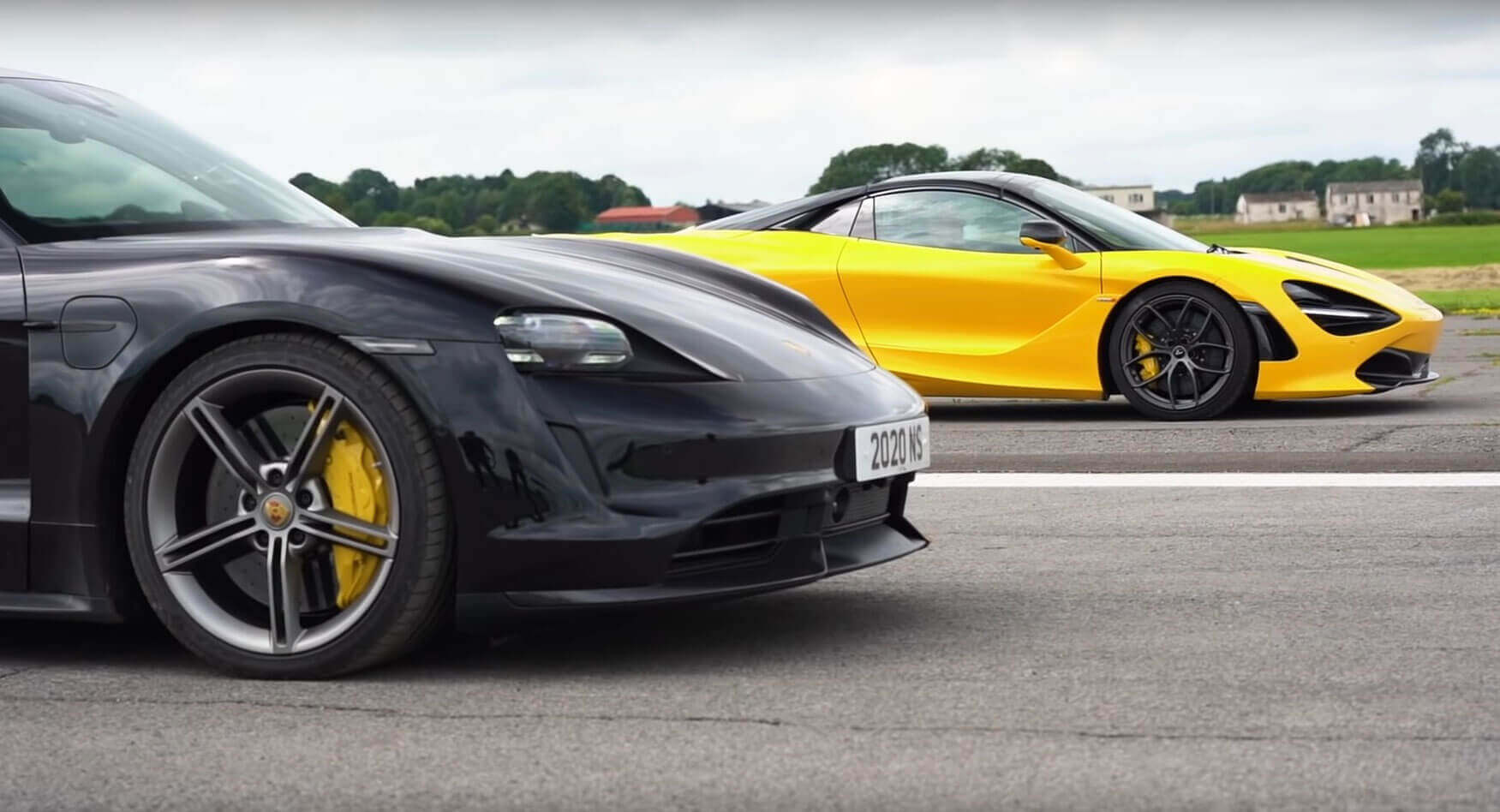In times gone by, the R35 Nissan GT-R was pretty much the quickest-accelerating production car on earth. However, considerably quicker supercars have come along in recent years, leaving the GT-R for dead. But, surely, with all of its power and traction, the GT-R will have no issues out-performing a couple of fast family cars, right?
Eager to answer that very question, CarWow lined up a Nissan GT-R Nismo against a Porsche Panamera Turbo S E-Hybrid and an Audi RS6. The races from a standing start and a rolling race are very telling.
Read Also: The 2021 Porsche Panamera Turbo S E-Hybrid Is A 689 HP Plug-In Hybrid
In the one and only race from a standing start, all three cars sprint off the line at impressive speeds and for the first few feet, are well matched. However, as the speeds start to increase, the Panamera Turbo S E-Hybrid and Nissan GT-R begin to eke out a lead. Eventually, it is the Porsche that stays ahead of the GT-R as the duo cross the finish line in a perfect demonstration of just how potent the Panamera is.
As for the rolling race, it was just as intriguing. With all three cars in their standard driving modes and with their transmissions in automatic modes, the RS6 gets off the line best but once again, the Porsche and Nissan soon leave it for dead. The main difference with this race is the fact that the Nissan started to pull away from the Porsche as the speeds increased.
[embedded content]
For GREAT deals on a new or used Chrysler, Dodge, Jeep or RAM check out LA CDJR TODAY!
